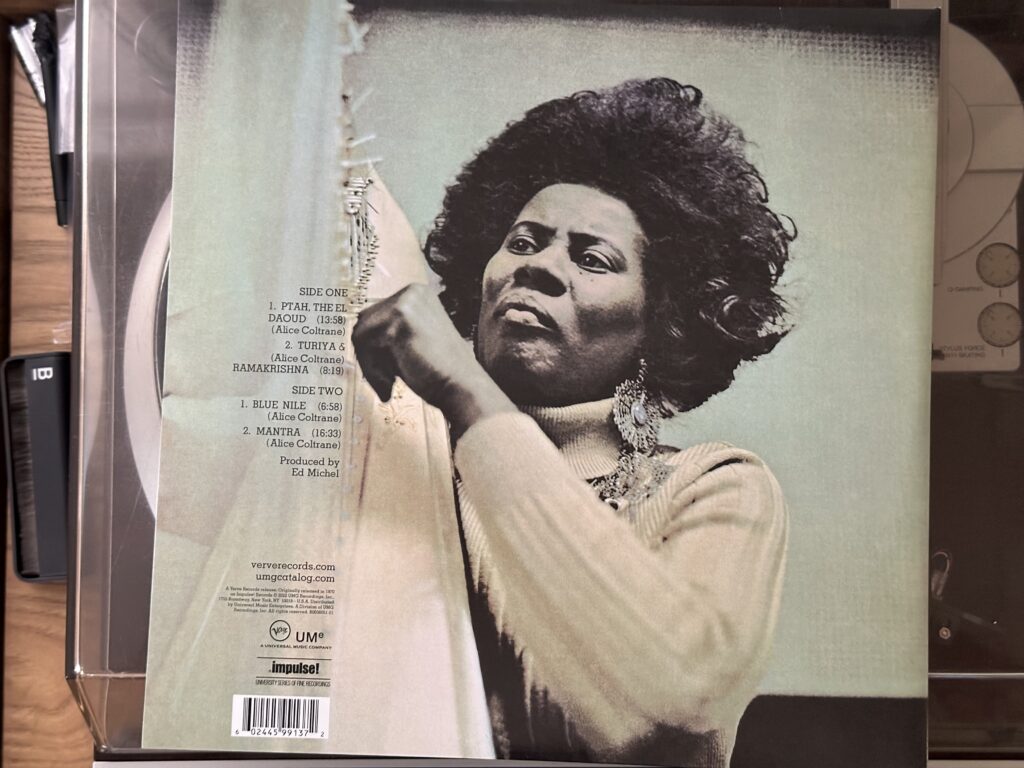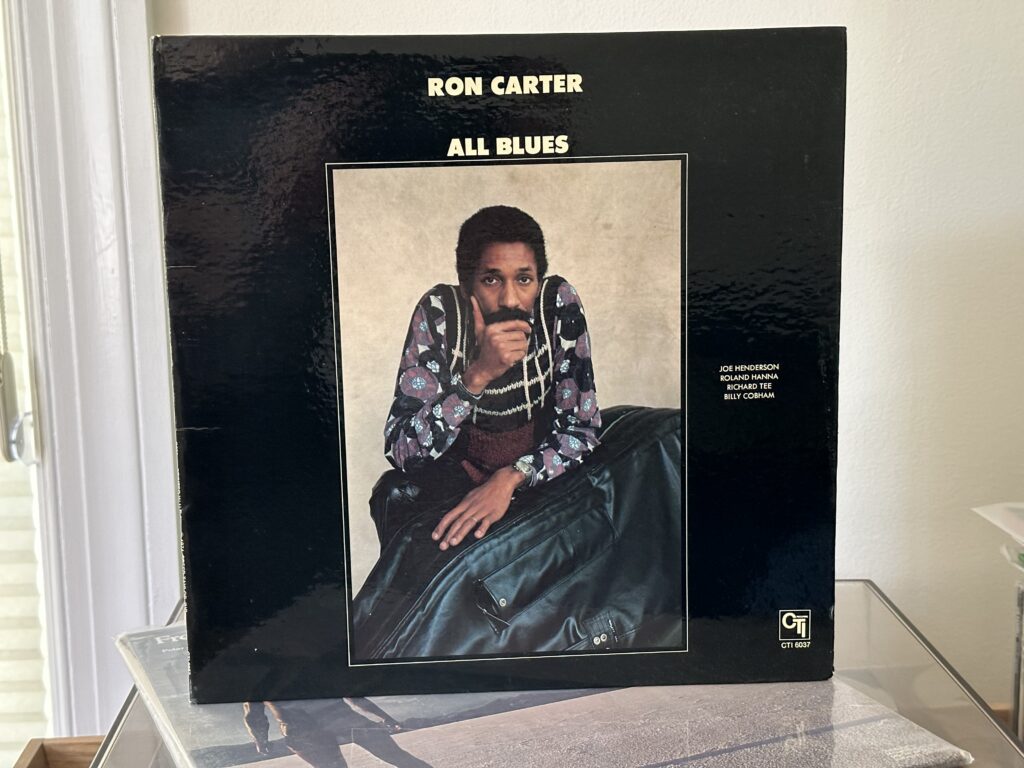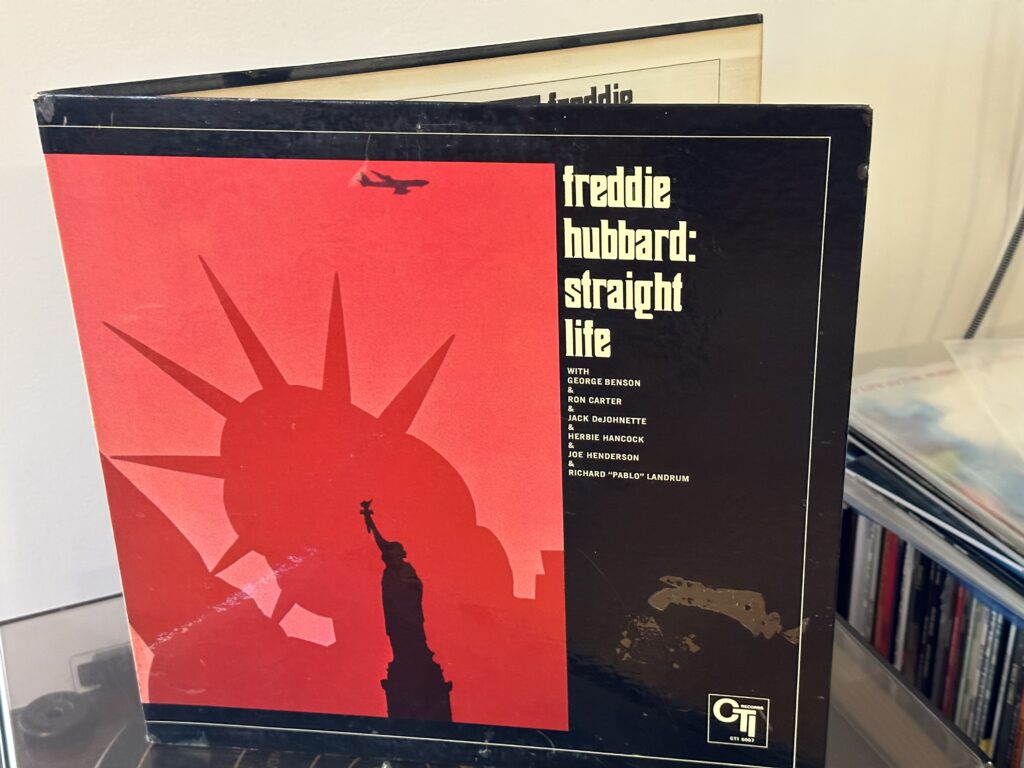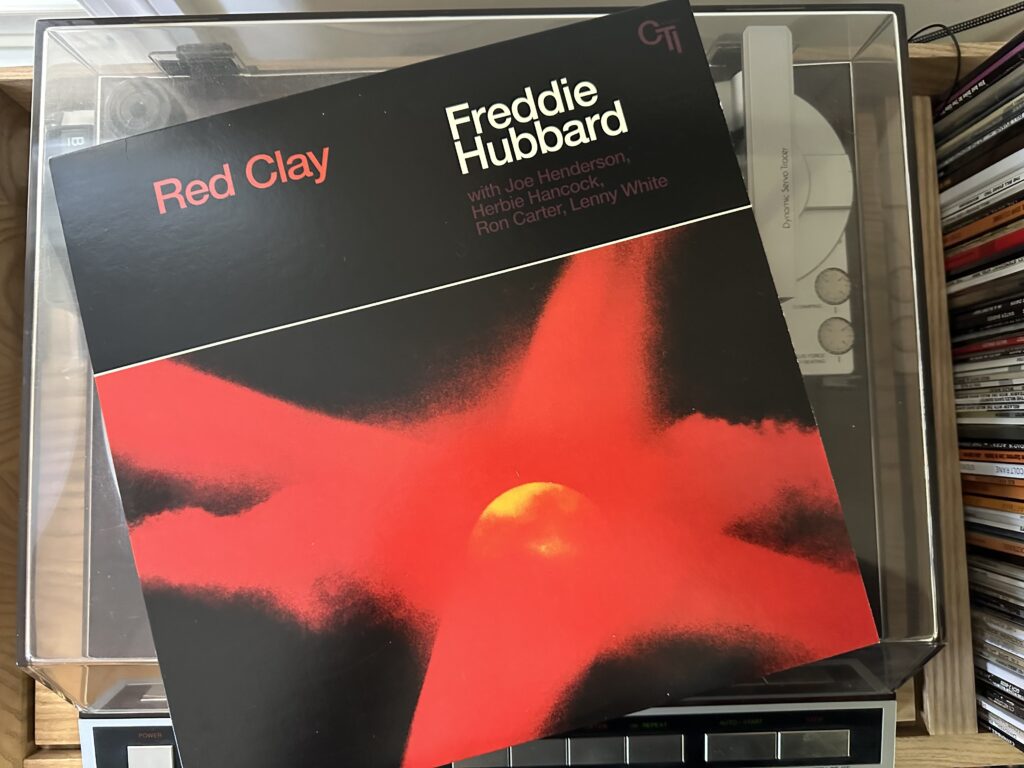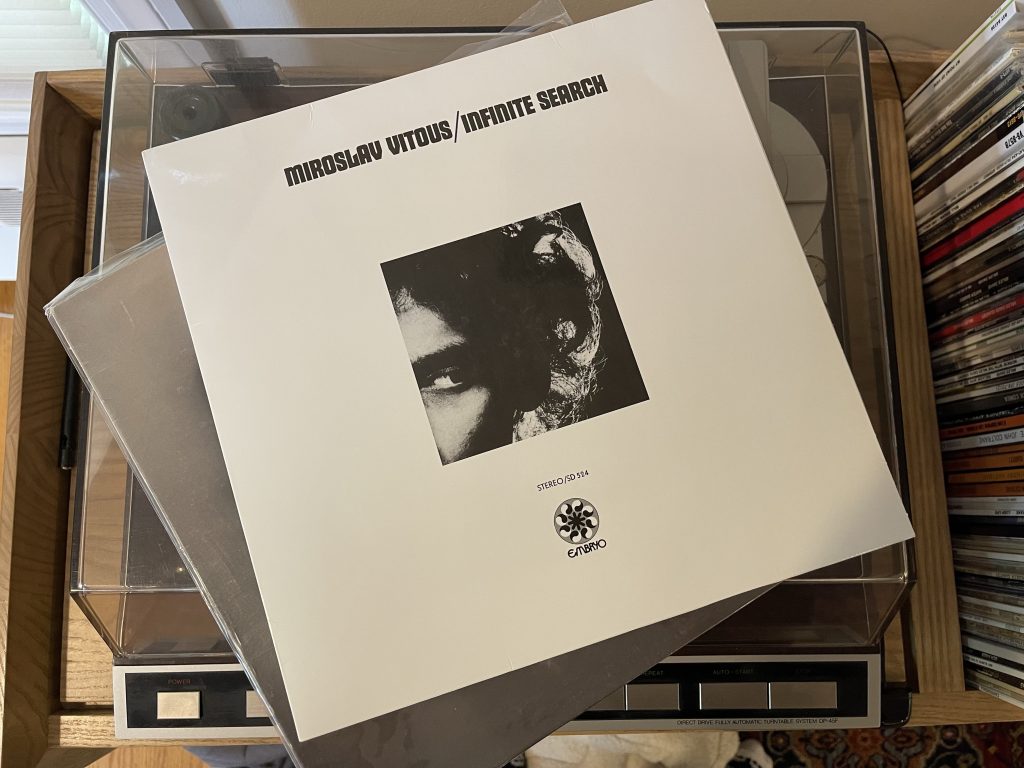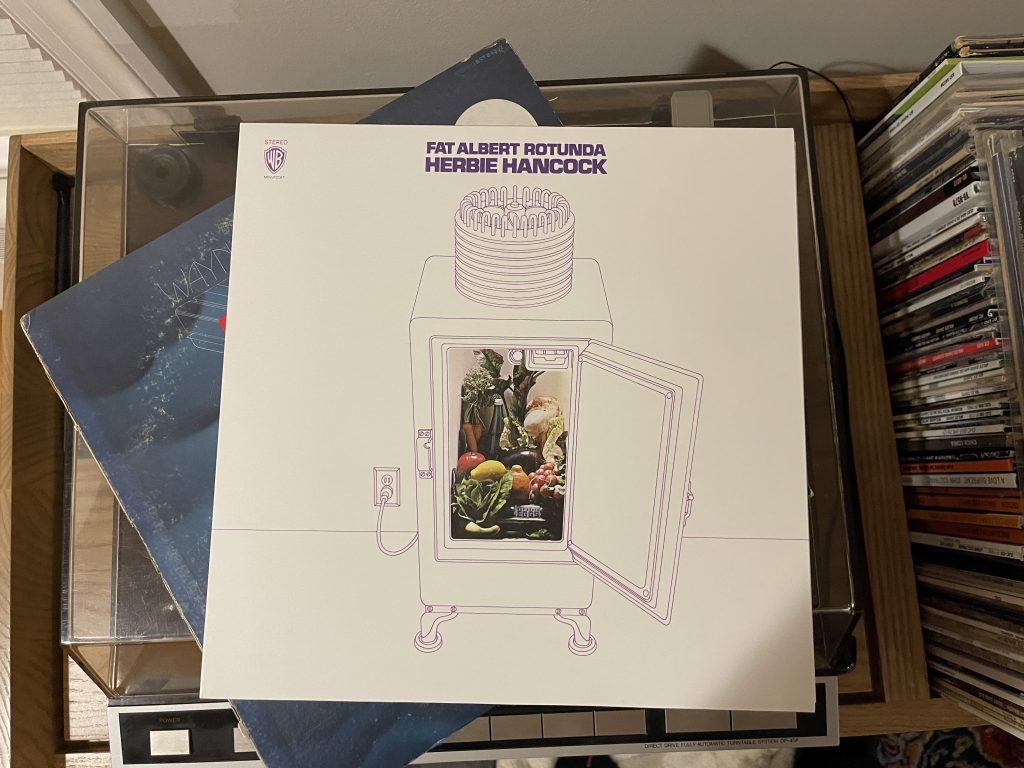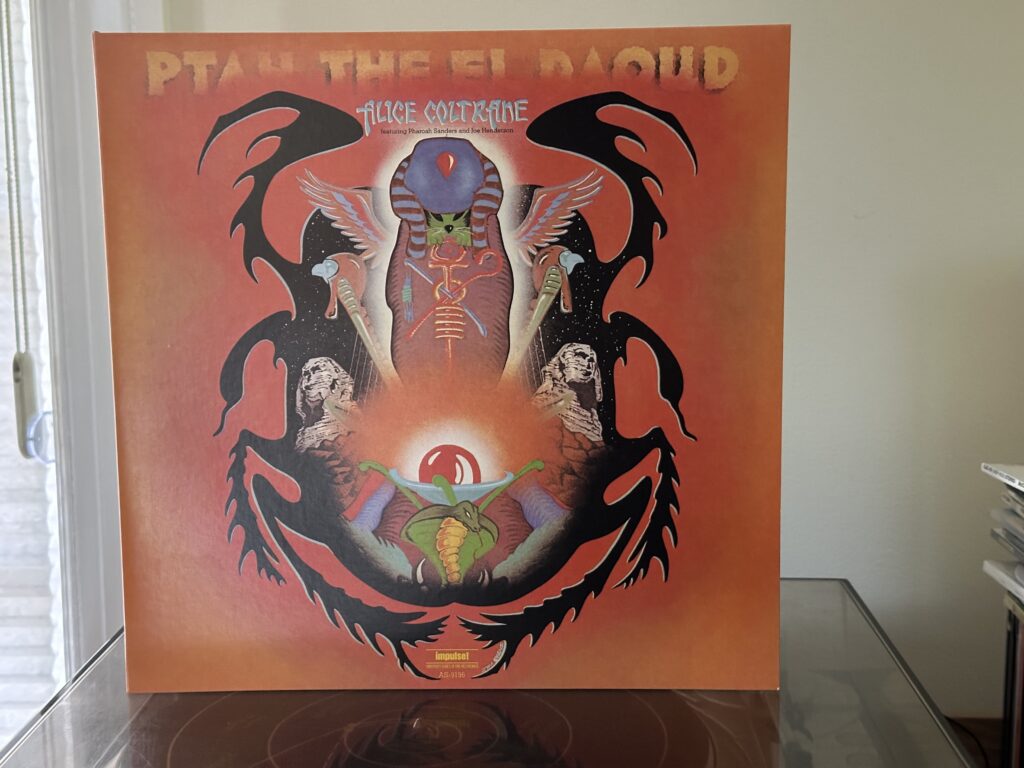
Album of the Week, May 4, 2024
We heard Alice Coltrane on McCoy Tyner’s Extensions last week—and she had played in her husband John Coltrane’s quartet until the end of his life—but her solo career didn’t really take off until this 1970 album. Yet it wasn’t her first album, nor even her first for Impulse. Following John’s death, in early January and again in June 1968, she and members of his quartet and quintet recorded a tribute to him in the couple’s home studio in Dix Hills, New York, which was released as A Monastic Trio later that year. Huntington Ashram Monastery followed in 1969, which was a simpler trio with just Ron Carter and Rashied Ali, again recorded in the home studio.
While Ptah, the El Daoud was recorded in the same home studio (a choice perhaps necessitated by her family; she was taking care of four children, all under the age of ten), it’s a very different record. While Pharoah Sanders appeared on her first album, he only played on one track; here he and Joe Henderson both perform, with Sanders in the right channel and Henderson in the left. Ron Carter returns and they are joined by drummer Ben Riley. Perhaps most importantly, here Alice turns to the harp as a primary instrument; as we’ve heard on Extensions, this was an instrument that would be a key part of her sound and which allowed her to claim a distinctive voice all her own.
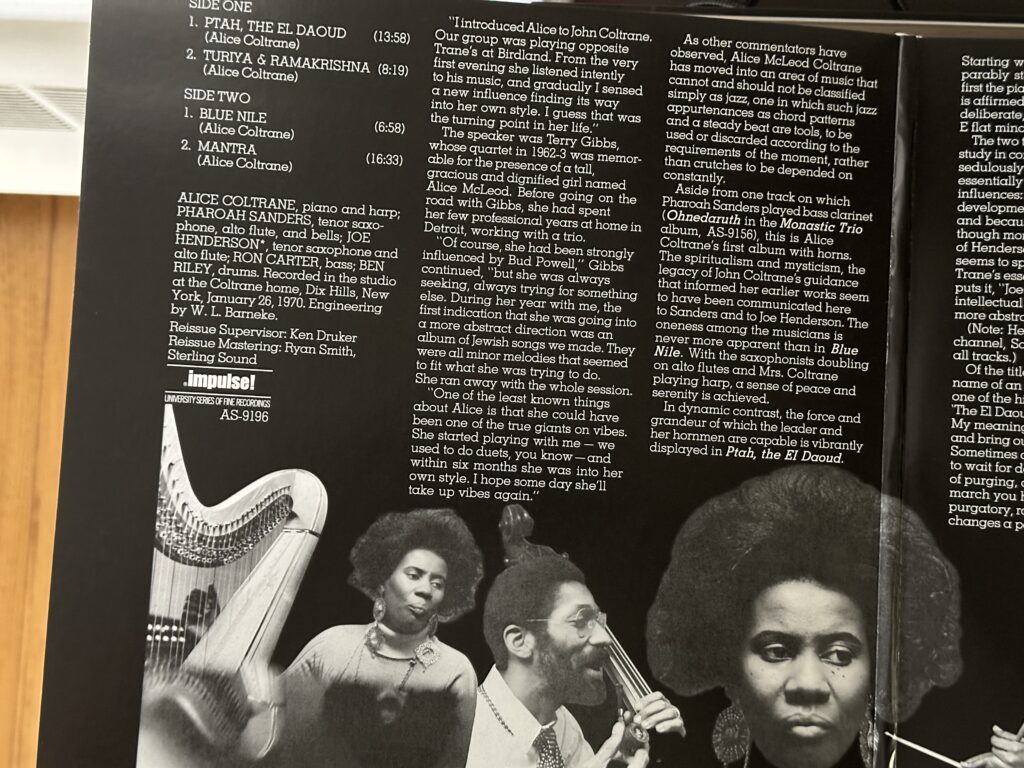
Literally meaning “Ptah [the supreme Egyptian deity] the beloved,” “Ptah, the El Daoud” begins with Ron Carter playing a march figure that’s joined by Ben Riley’s drums and the piano, then by the saxophones playing in unison. Joe Henderson takes the first solo, with a fleet approach to the instrument that circles around the key pitches, rather than generating ascending or descending “sheets of sound” arpeggios; Alice Coltrane accompanies with sharp stabs at the chords. Pharoah Sanders’ solo ascends relentlessly, embracing the groan of his instrument as he generates harmonics with overblowing, but also playing through a series of modulations with precision and clarity, somewhat belying Alice’s description of him as the more intuitive player compared to Henderson’s more cerebral approach. When Alice Coltrane takes the solo, she shifts from the sharp chords to glissandi in the upper octaves, an approach to soloing that seems to echo her style on the harp. And Ben Riley’s solo on the drums, accompanied by Pharoah Sanders on the bells, is sharply rhythmic and precise in a way that hearkens back to the opening march of the tune, leading into a recapitulation.
“Turiya and Ramakrishna” is a title that provides clues to the deep mysticism that pervaded Coltrane’s work, with Turiya defined as “a state of consciousness—the high state of Nirvana, the goal of human life,” and Ramakrishna referring to the Hindu mystic and spiritual leader. The tune itself is a blues, but a blues informed by Coltrane’s cascading scales and accompanied by Sanders’ bells. The horns stay out for this one, and we hear Carter and Coltrane circling around the central “three notes” of the tune, gradually turning the blues into a repetitive mantra. Carter’s solo is delicate, gently moving down the octave and circling back up to the top of the tune, playing only a few notes, but the right notes.
“Blue Nile” is the standout track from this set. Featuring Coltrane on harp and Sanders and Henderson on flute, the spiritual influences hinted at by the first side of the record are here laid bare. Henderson’s playing finds a few outer regions, while Sanders’ is unexpectedly tender and romantic; Carter plays a repeated rhythm on octaves, occasionally slipping in a supertonic or subtonic, while Coltrane’s harp warps the fabric of the cosmos. Riley’s drums seem to scuffle like the wings of a bird across the top of all the other moving pieces. It’s an amazing performance and one unlike anything else Alice Coltrane had played to this point.
“Mantra” puts the horns front and center, opening with an abstract wash of noise before Alice Coltrane enters with a brief theme. There is less in the way of a central melody here, and the musicians improvise in a more purely “free jazz” context. That’s not to say the playing is atonal; Sanders, in particular, moves in and out of several tunes before reaching an ecstatic and powerful peak, then stepping back into tonality over rolling chords from Coltrane. Her solo begins with those rolling chords over a bowed ground from the bass, and gradually the right hand evolves into a sort of ecstatic hovering flight as the left continues to hold firmly to the ground. The horns re-enter, seemingly taking to the same ecstatic flight, albeit in the lower register, before resolving to the irresolution of the dominant.
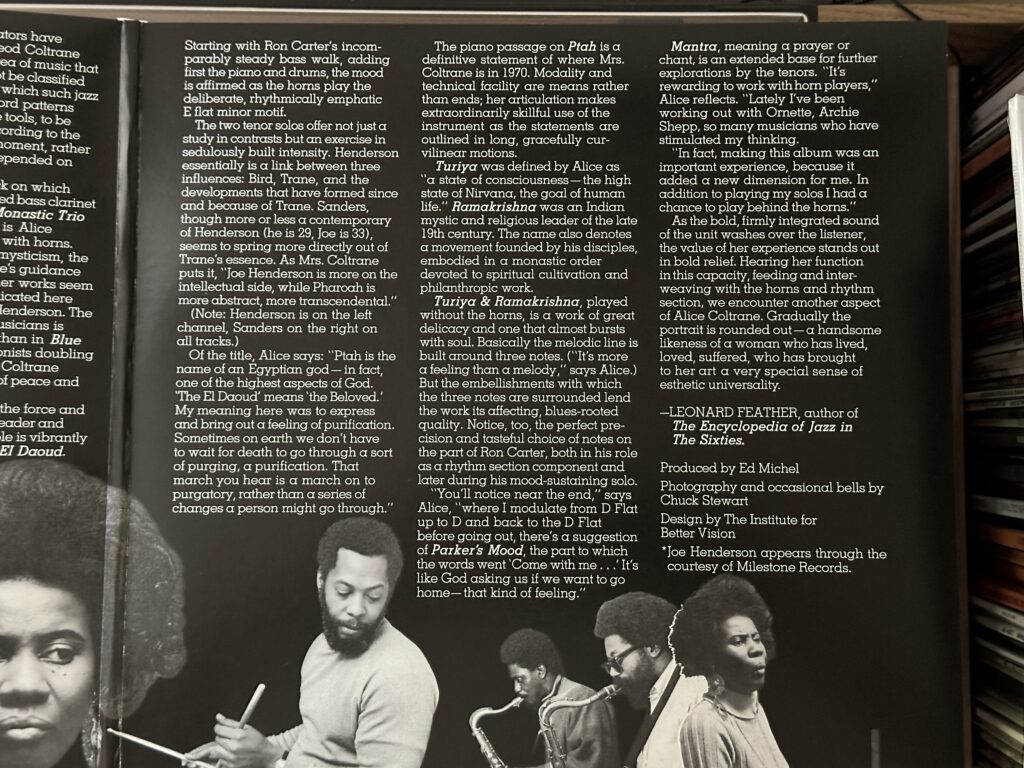
Alice Coltrane’s work was for years ranked, when discussed at all, as a lesser shadow of her husband’s, a dismissal that unfairly minimizes her own compositional and performing strengths. While Ptah was not reissued on CD until 1996, and didn’t see a proper remastering until 2022 (the source of my copy of the album), her music was nevertheless profoundly influential, and new discoveries from her extensive discography continue to appear. The release of her Carnegie Hall Concert this year is cause for definite celebration, and there appears to be more to come. Next week, though, we’ll check in once more with Pharoah Sanders for a different sort of performance.
You can listen to today’s album here:
